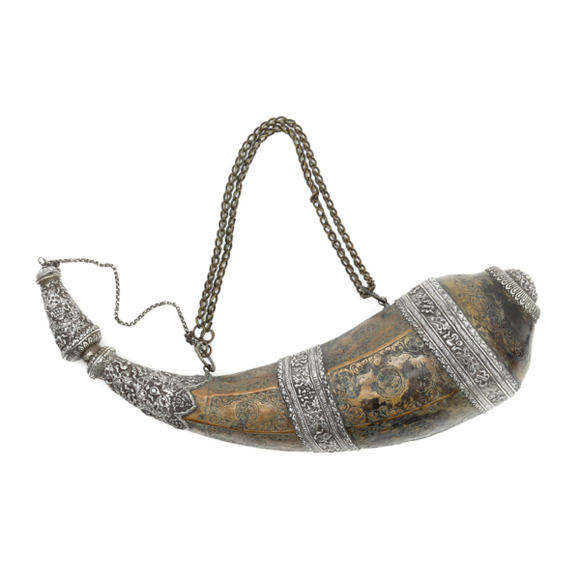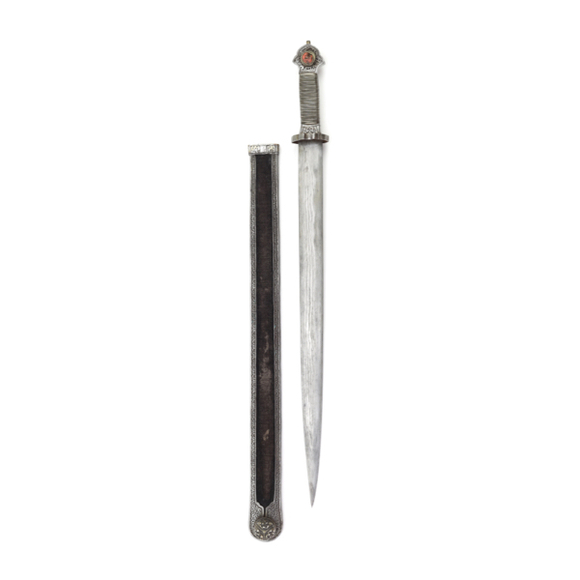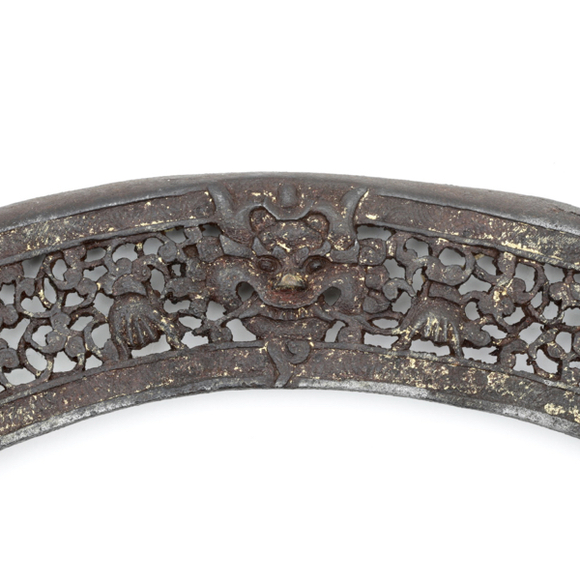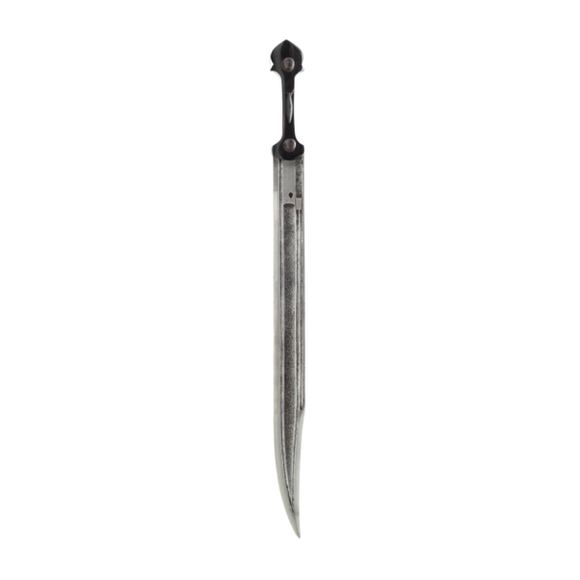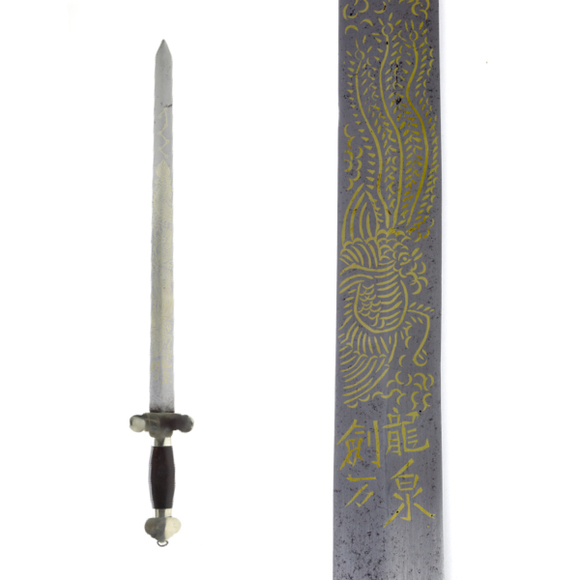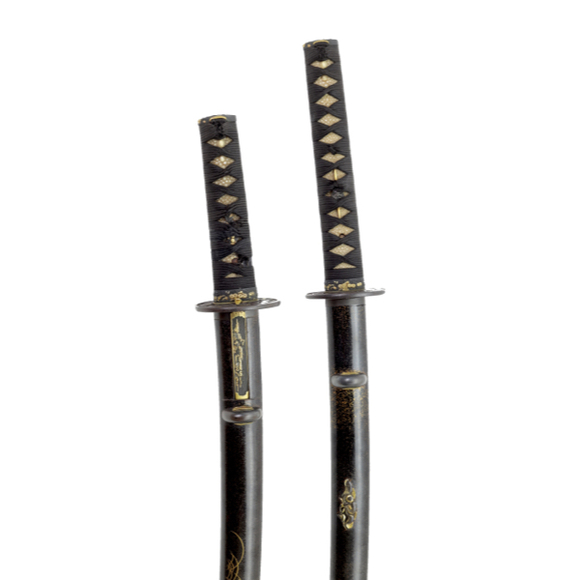Such work was made in the Royal workshops of Lhasa.

51.5 cm
40 cm
Base 5.5 mm
Middle 5 mm
5 cm from tip 3.5 mm
Base 30 mm
Middle 27 mm
5 cm from tip 15 mm
351 grams
9.7 cm from hilt
Iron, steel, wood, leather, silver, turquoise
Tibetan culture
Probably Jinchuan, Sichuan, China
18th-19th century hilt, blade, scabbard frame
19th-20th century scabbard mouthpiece and leather
Description
A Tibetan shortsword with a characteristic hairpin forged blade that gradually tapers to a sharp point. The blade is forged with five rows of mo lcags, or "female iron" that appears darker in the blade.
The iron-mounted hilt is of classic form, featuring a tri-lobed pommel, trapezoid ferrule, and small iron cup guard. All are constructed from relatively thick plates, soldered together with copper. Pommel and ferrule are pierced and chiseled with attractive designs of scrollwork on the facing side. Unusual is that the hilt is mounted so the blade faces downwards when worn, more typical for these shortswords is the edge aligned the other way. The guard has fluted decoration on the facing side.
The scabbard consists of a plain iron U-frame with metal mouthpiece. The frame holds two slabs of wood, covered with reddish leather as seen on the hilt. At the end of the scabbard is a silver ornament with three stylized waves.
Different periods
The piece shows signs of being used for a prolonged period of time. The iron hilt mounts, and iron U-frame of the scabbard appear to date from the 18th or early 19th century. The scabbard mouthpiece and leather covering grip and scabbard appear to be of a later date, late 19th to early 20th century. The wood was also possibly replaced during this period.
The work is nicely done and represents a later working-life alteration, not a later restoration. The scabbard has that characteristic old smell that you don't get from new wood.
The only truly new addition is the turquoise in the pommel, which was done this year by my restorer. The original bezel had gone lost over time, and the piece didn't look complete without it.
Attribution
Somewhat unusual for Tibetan work, the piece is entirely free of Buddhist imagery. The style of the scrollwork on the hilt, as well as the profile of the scabbard mouthpiece, reminds of work from Jinchuan, Sichuan, where the older Bon religion was still practiced.
Compare to the style of a Jinchuan Royal sword I sold in 2019, when looking at it take special note the form and nature of the decoration, and also the profile of the metal mounts on the back.


















This kind of fine work is typical for Tibetan work of the 15th-16th centuries.
Both blades signed, its koshirae fine maki-e lacquer work. Ito school tsuba and Mino Gotō style mounts. …

